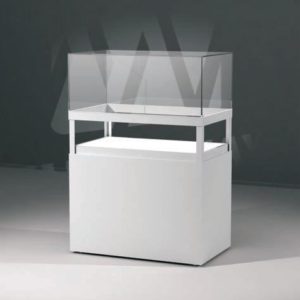 © Monkey Business / Fotolia.com
© Monkey Business / Fotolia.com
ProSorb: Der perfekte Schutz für Ihre wertvollen Sammlungen
Last updated on Juli 30th, 2024 at 09:18 am
« Effective moisture stabilizers for display cases »
It is a great challenge for museums to regulate not only the room climate but also the climatic conditions in display cases. Organic materials such as linen, paper, wood and textiles react extremely sensitively to fluctuations in humidity. Valuable exhibits therefore require special protective measures. The silica gel ProSorb is able to stabilize the humidity in closed glass cases. Find out what needs to be considered when using this innovative method in our magazine!
Optimal climatic conditions are of crucial importance for a museum. Stable humidity protects valuable exhibits from damage and reliably ensures that their value is maintained. Paintings, documents or busts – the hygroscopic properties of organic materials are the reason why these exhibits are so sensitive to climatic fluctuations. When moisture is absorbed, the cell structure of the material changes. The resulting expansion and contraction processes cause major problems. Cracks and bubbles occur – catastrophic for historically valuable exhibits. What applies to the rooms also cannot be neglected for display cases.
Display cases: present objects safely
The presentation of valuable exhibits is the main task of every museum. Display cases are practical tools for this. The clear glass cover protects against the grasping hands of visitors without obscuring the view of the rare collections. Whether all-glass, wall or table display cases – the shapes of the glass cases are as varied as the exhibits. The more sensitive the exhibit is to fluctuations in humidity, the more complex the climate technology in a display case is. In practice, various methods are used to keep the humidity levels constant in closed glass cases.


Air conditioning technology for showcases
The air conditioning of display cases is basically divided into two systems: the active and the passive method. In the active variant, humidified, purified air is fed directly into the glass case. An integrated humidity device, usually equipped with a catalyst, takes over this task. This creates a slight overpressure inside the display case, which prevents dust and air pollution. These high-tech systems are fully automatically regulated by electronic sensors.
For passive air conditioning, hydrophilic materials such as silica gel are used. These materials are placed in the display case and ensure a constant humidity level. The new and innovative method scores points above all for its exceptional ease of maintenance. The tolerances of the buffer material only increase after a service life of 3 years – then it should be replaced. ProSorb is a product that perfectly meets the high requirements for stabilizing the humidity in display cases.
ProSorb: A long life for art
The silica gel ProSorb is particularly suitable for stabilizing the humidity in museum display cases. But how does it work? Silica gel – also called silica gel – is a porous 
Perfect climate for valuable exhibits
Exhibits made of organic materials depend on constant climatic conditions. Wood, linen, textiles and paper are particularly at risk from strongly fluctuating humidity. In most museums and exhibition spaces, a humidity of between 40% and 60% is standard. ProSorb surpasses all other products in this area. The perspiration of many visitors and other external influences can significantly affect the room climate. The innovative silica gel keeps the humidity in the display case stable.

Flexible, practical, user-friendly
The ProSorb moisture stabilizers are particularly easy to use. The basic rule is: the more of them you use, the less moisture fluctuations will develop. Depending on the tightness and the moisture gradient compared to the ambient air, the display case will also need to be serviced less often. If the glass case is fitted with a wooden insert, the dosage should be increased. The hygroscopic wood absorbs additional moisture. In order to achieve the best effect, the air in the display case must have unhindered access to the beads. Clear dosage tables provide precise information on the quantities in which the material can be used.
ProSorb in cassettes, bags or plates
Loose beads are quite impractical to handle. This is why the moisture stabilizers are also delivered in cassettes, bags or plates. This makes post-conditioning much easier. Depending on requirements, ProSorb can be bought in cassettes or bags with filling quantities between 500 grams and 950 grams. The polypropylene honeycomb panels, on the other hand, are only made to order. Depending on the type of display case, the panels are even available in a slanted or round shape – even recesses can be incorporated.
A cost-effective product with many advantages
There are many other reasons why many museums use ProSorb. Compared to other silica gels, for example, the product produces relatively little dust – a decisive advantage when handling the loose beads. Because 1 kilogram only takes up a volume of 1.5 liters, much less space is needed for the same adsorption properties. The product also scores points for its high long-term stability. Tests have shown that the adsorption capacity decreases by just 20% after 10 years – an excellent value compared to other materials. Last but not least, the price also speaks for the high-quality moisture stabilizers. Anyone looking for a method to create perfect climatic conditions in museum display cases will find a tried and tested solution in ProSorb.








